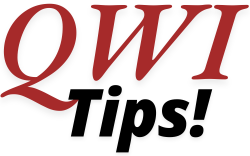Introduction
Home insurance is a critical component of protecting your property and assets, yet many homeowners may not fully understand the extent of their coverage. While most are familiar with the basics—such as dwelling and personal property coverage—there are often hidden benefits within their policies that can provide additional protection. By exploring these lesser-known coverages, homeowners can maximize their insurance benefits and ensure they are adequately protected in times of need. In this blog post, we will uncover hidden home insurance coverage you may not know you have and discuss how to make the most of your policy.
Understanding Home Insurance Basics
Definition of Home Insurance
Home insurance, also known as homeowners insurance, is a type of property insurance that provides financial protection to homeowners against various risks associated with their property. It typically covers damages to the home and its contents, as well as liability for injuries or damages that occur on the property. Home insurance is designed to help homeowners recover from unexpected events, such as natural disasters, theft, or accidents, by providing compensation for losses and expenses.
Common Types of Coverage Included in Standard Policies
-
Dwelling Coverage:
Dwelling coverage is a fundamental component of home insurance that protects the physical structure of the home itself. This includes the walls, roof, floors, and any attached structures, such as garages or decks. Dwelling coverage typically pays for repairs or rebuilding costs in the event of damage caused by covered perils, such as fire, windstorms, hail, or vandalism. It is important for homeowners to ensure that their dwelling coverage amount reflects the current replacement cost of their home to avoid being underinsured. -
Personal Property Coverage:
Personal property coverage protects the belongings inside the home, including furniture, appliances, electronics, clothing, and other personal items. This coverage typically applies to losses resulting from theft, fire, or other covered events. Homeowners should take an inventory of their personal belongings and consider the total value to ensure they have adequate coverage. Some policies may also offer replacement cost coverage, which provides funds to replace items at their current market value rather than their depreciated value. -
Liability Coverage:
Liability coverage protects homeowners from legal claims and financial losses resulting from injuries or damages that occur on their property. For example, if a guest is injured while visiting the home and decides to sue, liability coverage can help cover legal fees, medical expenses, and any settlements or judgments. This coverage is essential for protecting homeowners from potential financial ruin due to unforeseen accidents or incidents.
Importance of Reviewing Your Policy Regularly
Regularly reviewing your home insurance policy is crucial for several reasons:
-
Ensuring Adequate Coverage:
As homeowners make improvements to their property, acquire new belongings, or experience changes in their financial situation, it is important to ensure that their coverage limits are sufficient. Regular reviews help identify any gaps in coverage and allow homeowners to adjust their policies accordingly. -
Understanding Policy Changes:
Insurance companies may update their policies, coverage options, or terms. By reviewing the policy regularly, homeowners can stay informed about any changes that may affect their coverage and premiums. -
Identifying Discounts and Savings:
Homeowners may qualify for discounts based on factors such as home security systems, bundling policies, or claims history. Regularly reviewing the policy can help identify potential savings opportunities and ensure that homeowners are taking advantage of available discounts. -
Adapting to Life Changes:
Life events, such as marriage, the birth of a child, or retirement, can impact insurance needs. Regularly reviewing the policy allows homeowners to adjust their coverage to reflect their current circumstances and ensure adequate protection for their family and assets.
Understanding the basics of home insurance, including its definition, common types of coverage, and the importance of regular policy reviews, is essential for homeowners. By being proactive in managing their home insurance, homeowners can protect their property, belongings, and financial well-being against unexpected events.
Hidden Coverages in Home Insurance Policies
Additional Living Expenses (ALE)
-
Explanation of ALE and When It Applies:
Additional Living Expenses (ALE) coverage is a provision in many home insurance policies that helps cover the costs of living away from home when the residence is uninhabitable due to a covered loss, such as a fire or severe water damage. This coverage typically includes expenses such as hotel bills, restaurant meals, and other necessary living costs incurred while the home is being repaired. -
How It Can Cover Temporary Housing and Living Costs During Repairs:
ALE can provide financial assistance for temporary housing arrangements, such as renting a place to stay or staying in a hotel. It may also cover increased living expenses, such as dining out or laundry services, that exceed normal living costs. Homeowners should review their policy limits for ALE to ensure they have adequate coverage for potential extended stays away from home.
Replacement Cost vs. Actual Cash Value
-
Differences Between Replacement Cost and Actual Cash Value Coverage:
- Replacement Cost Coverage: This type of coverage pays for the cost to replace damaged or destroyed property with new items of similar kind and quality, without deducting for depreciation. For example, if a new roof is needed, the insurance would cover the full cost of a new roof.
- Actual Cash Value (ACV) Coverage: ACV coverage pays for the replacement cost of an item minus depreciation. This means that if a five-year-old television is damaged, the payout would be based on its current market value, which would be significantly less than the cost of a new television.
-
Benefits of Having Replacement Cost Coverage for Personal Property:
Replacement cost coverage is generally more beneficial for homeowners, as it ensures that they can replace their belongings without incurring out-of-pocket expenses for depreciation. This type of coverage provides peace of mind, knowing that in the event of a loss, they can restore their home and replace their possessions with new items.
Coverage for Home-Based Businesses
-
Explanation of How Home Insurance Can Cover Business Equipment and Liability:
Many standard home insurance policies provide limited coverage for business equipment and liability associated with home-based businesses. This can include coverage for office equipment, inventory, and liability protection in case a client is injured while visiting the home office. -
Importance of Disclosing Business Activities to Your Insurer:
It is crucial for homeowners with home-based businesses to disclose their business activities to their insurance provider. Failure to do so may result in denied claims or insufficient coverage. Some insurers may require a separate business policy or endorsement to provide adequate protection for business-related risks.
Identity Theft Protection
-
Overview of Identity Theft Coverage Included in Some Policies:
Some home insurance policies offer identity theft protection as an optional coverage. This protection can help cover expenses related to restoring a stolen identity, such as legal fees, lost wages, and costs associated with disputing fraudulent charges. -
How It Can Help with Expenses Related to Restoring Your Identity:
Identity theft protection can provide financial assistance for various expenses incurred while resolving identity theft issues. This may include costs for credit monitoring services, legal consultations, and any necessary documentation to restore one’s identity. Having this coverage can alleviate some of the financial burdens associated with identity theft.
Coverage for Personal Belongings Outside the Home
-
Explanation of Off-Premises Coverage for Personal Items:
Off-premises coverage is a provision in home insurance policies that protects personal belongings when they are outside the home. This coverage typically extends to items such as clothing, electronics, and sports equipment, providing protection against theft or damage. -
Examples of Situations Where This Coverage Is Beneficial:
Off-premises coverage can be beneficial in various situations, such as:- Theft of personal items from a vehicle.
- Damage to belongings while traveling, such as luggage lost or damaged during a flight.
- Items stolen from a storage unit or while attending an event.
Service Line Coverage
-
Definition of Service Line Coverage and What It Protects:
Service line coverage is an optional endorsement that protects homeowners from the costs associated with repairing or replacing underground utility lines that connect the home to public services. This includes water, sewer, gas, and electrical lines. -
Importance of Covering Underground Utility Lines and Systems:
Service line coverage is important because repairs to underground utility lines can be costly and are often the homeowner’s responsibility. This coverage can help mitigate unexpected expenses related to damage caused by tree roots, shifting soil, or other factors that may affect these lines.
How to Maximize Your Home Insurance Benefits
Reviewing Your Policy Annually
-
Importance of Understanding Your Coverage Limits and Exclusions:
Regularly reviewing your home insurance policy is essential to ensure that you fully understand your coverage limits and any exclusions that may apply. Coverage limits refer to the maximum amount your insurer will pay for a covered loss, while exclusions are specific situations or items that are not covered by the policy. By understanding these aspects, you can identify any gaps in coverage and make necessary adjustments to better protect your home and belongings. -
Tips for Discussing Your Policy with Your Insurance Agent:
- Prepare Questions: Before your annual review, prepare a list of questions regarding your coverage, limits, and any changes in your circumstances (e.g., home renovations, new valuables).
- Discuss Changes: Inform your agent about any changes in your home or lifestyle that may affect your coverage needs, such as acquiring new high-value items or starting a home-based business.
- Request Policy Comparisons: Ask your agent to provide comparisons of your current policy with other options available, including potential discounts or additional coverage that may be beneficial.
Documenting Your Belongings
-
Importance of Keeping an Inventory of Personal Property:
Maintaining an inventory of your personal belongings is crucial for maximizing your home insurance benefits. In the event of a loss, having a detailed inventory can expedite the claims process and ensure you receive the appropriate compensation for your items. An inventory helps you keep track of the value of your possessions and can also assist in determining the appropriate coverage limits for personal property. -
How to Use Technology for Easy Documentation:
Technology can simplify the process of documenting your belongings:- Mobile Apps: Use inventory management apps designed for home inventory tracking. These apps often allow you to take photos, record purchase dates, and note values for each item.
- Cloud Storage: Store your inventory in a cloud-based service, ensuring that it is accessible from anywhere and protected from physical damage. This can include spreadsheets, photos, and receipts.
- Video Documentation: Consider creating a video walkthrough of your home, showcasing your belongings and their condition. This can serve as a visual record for insurance purposes.

Bundling Policies for Discounts
-
Overview of Potential Savings by Bundling Home and Auto Insurance:
Many insurance companies offer discounts for bundling multiple policies, such as home and auto insurance. Bundling can lead to significant savings on premiums, as insurers often provide a lower rate for customers who consolidate their coverage with one provider. This not only reduces costs but also simplifies management by having all policies under one roof. -
Importance of Shopping Around for the Best Rates:
While bundling can provide savings, it is essential to shop around and compare rates from different insurers. Here are some tips for finding the best rates:- Get Multiple Quotes: Request quotes from several insurance companies to compare coverage options and premiums. This can help you identify the best value for your specific needs.
- Evaluate Coverage Options: Ensure that you are comparing similar coverage levels and deductibles across different policies to make an informed decision.
- Look for Additional Discounts: Inquire about other discounts that may apply, such as those for home security systems, claims-free history, or loyalty programs.
Maximizing your home insurance benefits involves regularly reviewing your policy, documenting your belongings, and exploring opportunities for discounts through bundling. By taking these proactive steps, homeowners can ensure they have adequate coverage, streamline the claims process, and potentially save money on their insurance premiums.
Common Misconceptions About Home Insurance
Believing All Damages Are Covered
-
Explanation of Common Exclusions (e.g., Flood, Earthquake):
One of the most prevalent misconceptions about home insurance is the belief that all types of damages are covered under a standard policy. In reality, many home insurance policies have specific exclusions that homeowners should be aware of. Common exclusions include:- Flood Damage: Most standard home insurance policies do not cover damages caused by flooding. Homeowners in flood-prone areas may need to purchase separate flood insurance through the National Flood Insurance Program (NFIP) or private insurers.
- Earthquake Damage: Similar to flood coverage, earthquake damage is often excluded from standard policies. Homeowners in seismically active regions may need to obtain additional earthquake insurance to protect against this risk.
- Maintenance Issues: Damage resulting from lack of maintenance, such as mold growth or pest infestations, is typically not covered. Homeowners are responsible for maintaining their property to prevent such issues.
-
Importance of Understanding Your Specific Policy:
It is crucial for homeowners to thoroughly read and understand their specific insurance policy, including the coverage limits, exclusions, and any endorsements that may be available. By being informed about what is and isn’t covered, homeowners can make better decisions about additional coverage options and ensure they are adequately protected against potential risks.
Assuming Coverage Is the Same Across Providers
-
Differences in Coverage Options and Limits Among Insurers:
Another common misconception is that all home insurance policies are essentially the same across different providers. In reality, coverage options, limits, and exclusions can vary significantly from one insurer to another. Factors that can differ include:- Coverage Limits: Different insurers may offer varying limits for dwelling coverage, personal property, and liability coverage. Homeowners should ensure that their coverage limits align with their needs and the value of their property.
- Additional Coverages: Some insurers may offer unique endorsements or additional coverages, such as identity theft protection, service line coverage, or coverage for home-based businesses, while others may not. Homeowners should assess their specific needs and seek policies that provide the necessary protections.
-
Importance of Comparing Policies Before Purchasing:
Given the differences in coverage options and limits, it is essential for homeowners to compare policies from multiple insurers before making a purchase. Here are some tips for effective comparison:- Request Quotes: Obtain quotes from several insurance providers to compare premiums, coverage options, and deductibles.
- Review Policy Details: Carefully review the details of each policy, including coverage limits, exclusions, and any additional endorsements. Look for any gaps in coverage that may need to be addressed.
- Consider Customer Service and Claims Process: Research the reputation of each insurer regarding customer service and the claims process. Reading reviews and checking ratings can provide insights into how well an insurer handles claims and customer inquiries.
FAQs
Q: What is home insurance?
A: Home insurance is a policy that protects your home and personal belongings from risks like fire, theft, and natural disasters, providing financial coverage for repairs or replacements.
Q: What are some hidden coverages in home insurance policies?
A: Hidden coverages may include protection for personal liability, additional living expenses during home repairs, coverage for personal property off-premises, and even identity theft protection.
Q: How can I find out what hidden coverages I have?
A: To find out about hidden coverages, review your policy documents, speak with your insurance agent, and ask specific questions about what is included in your coverage.
Q: Are there any common exclusions in home insurance policies?
A: Common exclusions include damage from floods, earthquakes, and normal wear and tear, so it’s important to understand what is not covered and consider additional policies if needed.
Q: Can I add additional coverage for hidden risks?
A: Yes, you can often add endorsements or riders to your policy for specific risks, such as valuable personal property, home-based businesses, or increased liability coverage.
Q: How often should I review my home insurance policy?
A: It’s advisable to review your home insurance policy annually or whenever you make significant changes to your home or personal belongings to ensure you have adequate coverage.
Conclusion
Understanding the hidden coverages in your home insurance policy can significantly enhance your protection and peace of mind. From additional living expenses and identity theft protection to coverage for home-based businesses and service lines, these often-overlooked benefits can provide crucial support when you need it most. By reviewing your policy regularly, documenting your belongings, and consulting with an insurance professional, you can ensure that you are making the most of your home insurance coverage. Take the time to explore these hidden gems in your policy, and empower yourself to protect your home and assets effectively. Being proactive in your insurance strategy is key to safeguarding your financial future.




